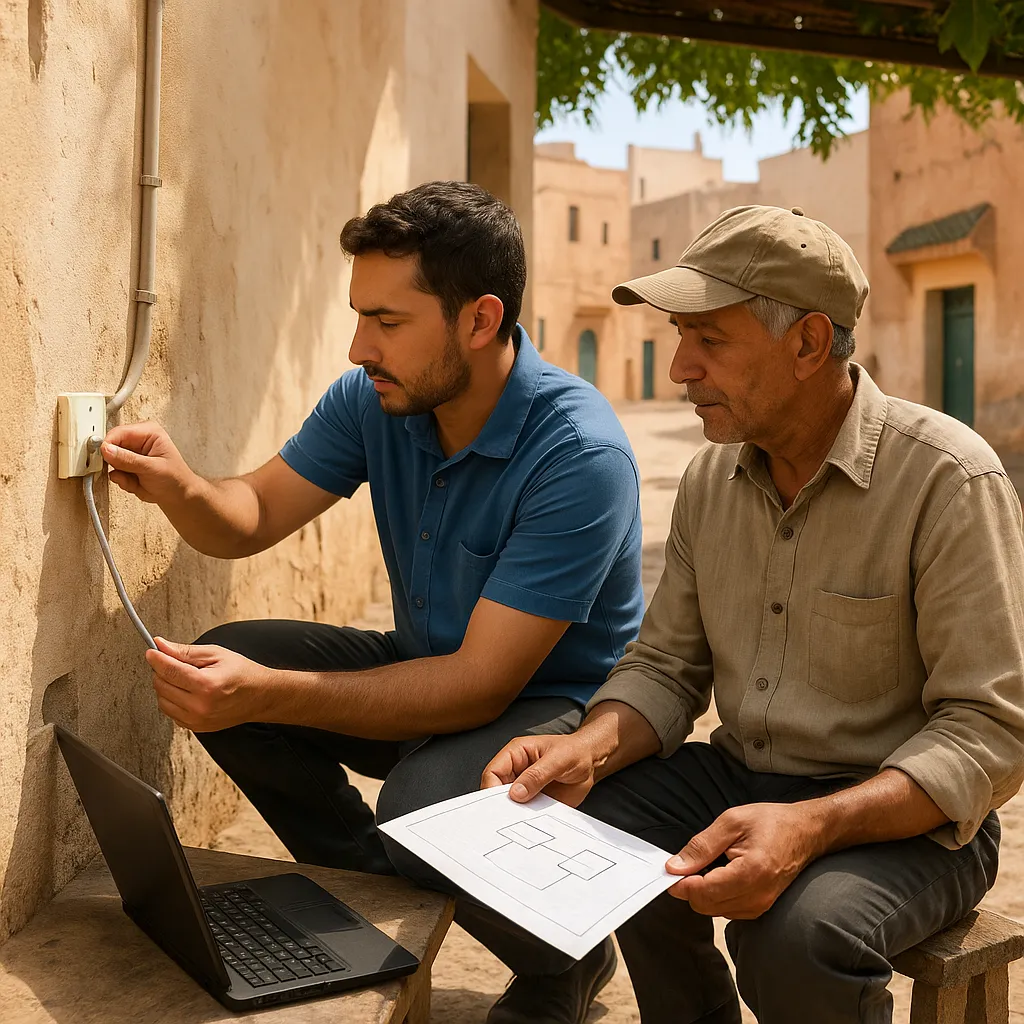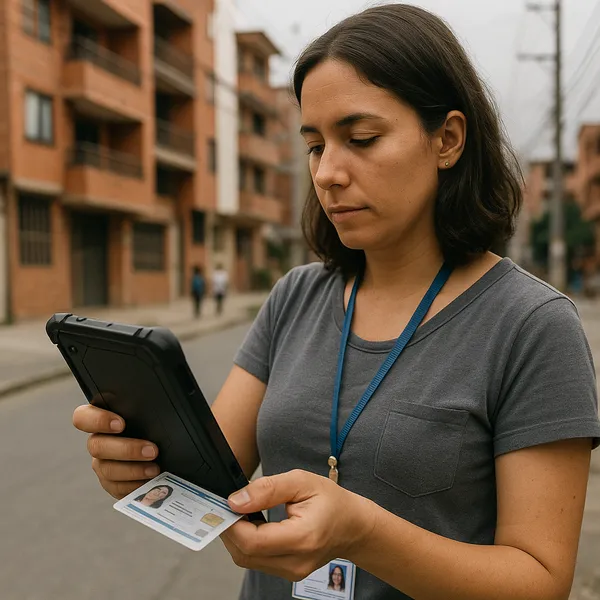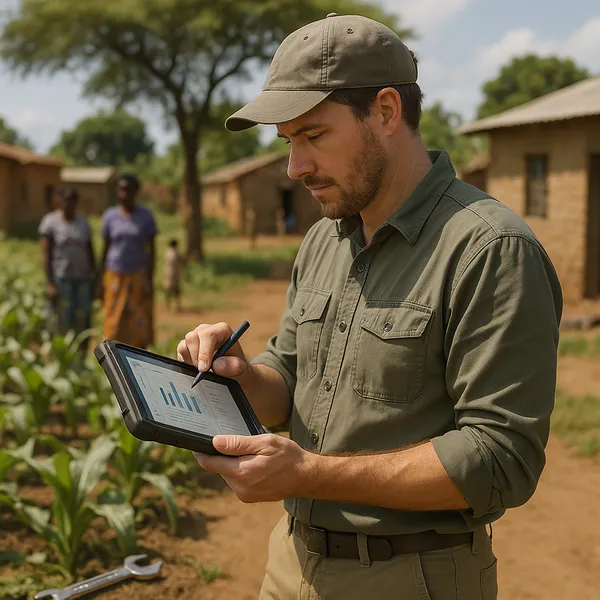Unified Data Architecture: Integrating Heterogeneous Streams for Fiduciary Oversight
Published on: Sun Oct 13 2019 by Ivar Strand
A Unified Platform: Integrating Data Streams for Secure Monitoring
Introduction
The data ecosystem of a typical international development project is often highly fragmented. Quantitative survey data resides on a dedicated platform like KoboToolbox; financial records are tracked in Excel spreadsheets; narrative progress reports are drafted in Word documents; and photographic evidence is exchanged via email or messaging applications. This decentralization of information is not a deliberate design choice but the natural consequence of using a collection of disconnected, best-in-class tools for specific tasks.
This fragmentation, however, creates significant and under-appreciated operational challenges. It imposes a heavy burden of manual data consolidation, which introduces delays and inefficiencies. It hinders meaningful cross-analysis between different data types. Most critically, it multiplies data security risks, scattering sensitive information across numerous, often insecure, endpoints. The core challenge, therefore, is to move beyond this ad-hoc assembly of tools and develop a single, secure digital platform capable of ingesting, storing, and managing these diverse data streams in a unified and secure environment for end-to-end project oversight.
The Operational Costs of a Fragmented Data Ecosystem
The chronic inefficiencies and risks associated with a fragmented data landscape are often accepted as the normal cost of doing business. A systematic analysis, however, reveals their true impact on efficiency, analysis, and security.
- Inefficiency and Decision Latency: The process of manually collating information from different sources is intensely laborious. A project manager seeking a holistic view must manually export, clean, and merge data from multiple systems. This not only consumes valuable staff time but also introduces significant latency into the decision-making cycle. By the time a consolidated report is produced, the information may already be outdated.
- Impeded Cross-Cutting Analysis: The most valuable insights often emerge from the intersection of different data types—for example, comparing financial expenditure against reported activity completion or mapping beneficiary feedback against logistical performance. In a fragmented system, such analysis is technically difficult and time-consuming, and as a result, it is rarely performed systematically. The inability to easily query across datasets leaves a considerable amount of potential insight untapped.
- Compromised Data Security and Governance: A scattered data architecture is a significant liability. Sensitive project data residing in spreadsheets on individual laptops, attached to emails, or stored in personal cloud accounts lacks centralized security controls. It is nearly impossible to effectively manage access, track usage, or ensure compliance with data protection regulations like GDPR. Each unsecured endpoint represents a potential point of failure, increasing the risk of a data breach and violating the fundamental principles of data governance.
- The Absence of a Single Source of Truth: Fragmentation inevitably leads to version control issues. Multiple versions of a spreadsheet or report can circulate, creating confusion about which data is authoritative. This lack of a “single source of truth” undermines trust in the data and can lead to decisions based on flawed or incomplete information.
Architectural Principles of a Unified Monitoring Platform
A unified platform is designed to solve these challenges. Its architecture must be built on a set of core principles that prioritize security, flexibility, and usability. At Abyrint, we have designed and implemented systems based on the following foundational tenets.
- Agnostic Data Ingestion: The platform must be able to accommodate the diverse data formats generated by a project. This requires a flexible architecture with built-in connectors or Application Programming Interfaces (APIs) capable of ingesting:
- Structured Data: From survey platforms and databases (e.g., via KoboToolbox API).
- Unstructured Data: Text from Word documents or PDFs (e.g., narrative reports, field notes).
- Semi-Structured Data: Financial information from spreadsheets or accounting systems.
- Multimedia Files: Geotagged photographs, audio recordings, and video clips, complete with their associated metadata.
- Centralized, Secure Storage: All ingested data, regardless of its original format, must be stored in a single, secure, cloud-based repository. This environment must feature end-to-end encryption, ensuring data is protected both in transit and at rest. It should also include robust, automated backup and disaster recovery protocols to guarantee data integrity and availability.
- Granular, Role-Based Access Control: Security is enforced through rigorous control over user permissions. A unified platform must allow administrators to define specific user roles and grant access only to the information necessary for their function. A field officer, for example, can be granted permission to upload data for their specific project but not to view portfolio-level financial reports. Every significant user action—from login to data download—must be recorded in an immutable audit log, providing a clear chain of custody.
- Integrated Workflow Automation: A key advantage of a unified system is the ability to automate routine processes. When a field team submits a weekly report, for instance, the platform can automatically route it to the correct project manager for review and notify them via email. If a data quality algorithm detects an anomaly in a new batch of survey data, it can automatically generate a task for the M&E officer to investigate. This automation reduces manual effort, minimizes human error, and ensures that established processes are followed consistently.
The Platform as a Governance Framework
Viewing this system as merely a technical tool for data storage is to miss its primary strategic value. A unified platform is the operational embodiment of an organization’s data governance strategy. By centralizing data within a controlled environment, enforcing strict access rules, and creating a comprehensive and unalterable audit trail, the platform provides the technical infrastructure required to ensure compliance with the most stringent data protection standards.
The transition from a fragmented collection of files and systems to a single, secure platform is a necessary evolution for any organization that is serious about operational efficiency, analytical depth, and its fiduciary duty to protect sensitive information. It transforms the often-chaotic practice of project monitoring from a high-risk, scattered activity into a secure, governed, and value-adding process, providing a stable foundation for evidence-based management and accountability.



